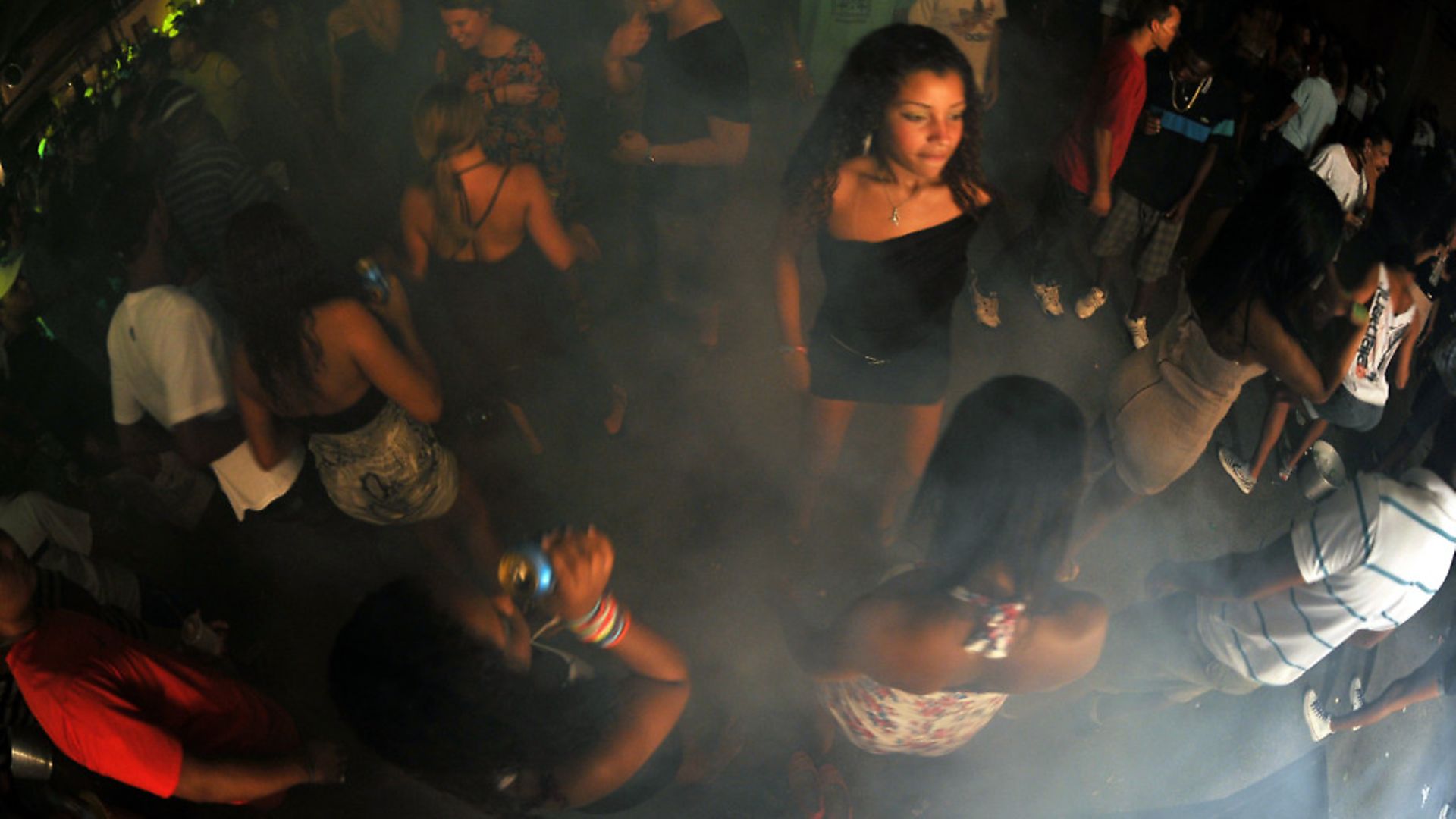
From bossa nova to baile, the Brazilian city has always danced to its own beat. Sophie Deboick reports.
For Rio de Janeiro, music is always the answer. Whether in tragedy or triumph, a musical response can always be counted on, and in a city that suffers some of the most obscene inequality and grinding poverty on the face of the earth, that experience is expressed in song even as celebration remains this pulsating metropolis’ default mode.
Many cities claim to be a ‘melting pot’, but Rio genuinely is, the influence of the four million Africans forcibly taken to the country before slavery was abolished in 1888 being felt in every area of culture, not least in Carnaval, where the Portuguese Catholic colonial legacy and Afro-Brazilian samba beats meet and the indigenous inheritance is also celebrated. But beyond Carnaval, the meeting of cultures in this city has resulted in the invention of whole new genres, from the soothing sounds of the bossa nova, to the confrontational, dirty electronic rhythms of Rio funk, influencing musicians around the world.
As the popular account has it, samba originated in the Rio home of the street food vendor and priestess of the Candomblé religion, Tia Ciata. As the location for rodas de samba (something between a jam session and a party), this was where some of the most important musicians of early 20th century Brazilian music gathered. Pelo Telefone, released on Rio’s Odeon Records in 1917 and often pegged as the very first samba record, was probably written at one of these rodas by the guitarist Ernesto dos Santos, better known as Donga, and the playwright Mauro de Almeida.
The saxophonist and flautist Pixinguinha was another of Ciata’s guests, and would form the influential band Oito Batutas with Donga, offering an overtly black Brazilian sound in a city that, in the 1920s, often looked to the chic cities of Europe for its cultural cues.
While Pixinguinha would pioneer a new age in the choro style of Brazilian music that had first emerged four decades before, choro would be ultimately stifled by the samba and its laid-back derivative, the bossa nova.
Before the 1960s, the face of Brazil to the rest of the world was Carmen Miranda, who had been brought up in Rio but projected an image of a generic Latina. But with the arrival of bossa nova (‘new wave’) in the Anglophone world, an authentic sound of urban Rio broke free from the city limits and was transmitted beyond the borders of Brazil.
The ground had been laid in the 1930s by the likes of Noel Rosa, who took samba in a lighter, more effervescent direction (he is honoured today with a statue in the Vila Isabel neighbourhood of Rio that was his home).
Ary Barroso’s orchestral, Hollywood-friendly approach, as seen in his Aquarela do Brasil, was also an important precursor. But it was Antônio Carlos Jobim who, in the late 1950s, took samba beats and married them to the feel of cool jazz to create the bossa nova – a sound with a laidback cool all of its own that could only have been born in Rio – and then exported it to the world.
Jobim, born in Rio’s leafy Tijuca district, was a pianist in the clubs of Rio before he became an executive at Odeon Records and created one of the defining musical genres of the 1960s. He wrote Chega de Saudade (No More Blues) and Desafinado, both recorded by the legendary guitarist and vocalist João Gilberto in the late 1950s, but when the latter was covered on the American jazz musicians Stan Getz and Charlie Byrd’s album Jazz Samba (1962) it became a UK and US chart hit.
But it was the collaboration between Jobim, Getz, Gilberto, and the latter’s wife Astrud on the album Getz/Gilberto (1963) that saw bossa nova take over the American pop landscape. Its opener, The Girl from Ipanema, with Astrud Gilberto’s ingénue vocals, won Record of the Year at the 1965 Grammys and became an instant classic, as well as bringing an unlikely international focus to the beachside neighbourhood of Rio where Jobim had grown up. When Jobim made an album with Frank Sinatra in 1967, the bossa nova completed its transition from being the sound of cosmopolitan Rio to that of mainstream easy listening.
Just as the smooth sound of bossa nova was breaking through, Brazil was facing turmoil as a military coup marked the beginning of two decades of military dictatorship. The birth of Brazilian rock would only follow the fall of that regime. When it did emerge, it was with some of the most extreme sounds then conceivable.
Sepultura, formed in 1984 by brothers Max and Igor Cavalera from the inland city of forests and mountains, Belo Horizonte, made their breakthrough when they recorded their third album, Beneath the Remains (1989), at Nas Nuvens Studio, in the shadow of the statue of Christ the Redeemer. Their first album on a North American label (the iconic Roadrunner Records) and produced by veteran engineer of the Florida death metal scene Scott Burns, it was a highly influential thrash metal milestone, taking its cue from European and North American extreme metal. Given the contributions of Rio thrash pioneers Dorsal Atlântica and Sarcófago, the city has punched well above its weight in metal history.
Rio’s rap rock and hip hop has struck a similarly uncompromising tone. Debuting in 1995 with their album Usuário, Planet Hemp are a kind of pro-weed concept band that have, unsurprisingly, always attracted controversy. Rio-born rapper Marcelo D2 launched his career with the band. His landmark 2003 album À Procura da Batida Perfeita (Looking for the Perfect Beat) was produced by Beastie Boys co-producer Mario Caldato and married hip hop to samba.
DeFalla, meanwhile, emerging in the mid-1980s in Porto Alegre, 1,000 miles down the coast from Rio in this truly vast nation, had become staples of Rio’s alternative rock scene. Fronted by the flamboyant enfant terrible of Brazilian rock, Edu K, they were always musically eclectic, and originally betrayed post-punk, rap rock and grunge influences (they held their own on the same bill as Nirvana and Alice in Chains at the 1993 Hollywood Rock festival in São Paulo and Rio). But in 2000, a new genre gave DeFalla a renaissance, as their smash hit Popozuda Rock’n’Roll embraced carioca funk (Rio funk), one of the most vibrant new musical genres of recent decades.
Characterised by frenetic electronic beats and explicit lyrics, carioca funk, also known as baile funk (the baile is a block party where such music is played), is inextricably bound up with the poverty and organised crime of Rio’s slums, the favelas. Originating in the work of Rio’s DJ Marlboro in the late 1980s, Rio funk melded the Miami bass hip hop sound with gangsta rap attitudes and became the sound of the favelas, sometimes becoming part of the arsenal of influence among crime bosses, as they bankrolled the bailes and acted as patrons to carioca artists.
The seminal 1994 hit Rap da Felicidade by Cidinho & Doca, rappers from the notorious Cidade de Deus (City of God) favela, was usual in pleading for peace (“I just want to be happy/ Walk quietly in the favela where I was born”), and the violence and explicit sexual content of the typical carioca lyric (the popozuda of DeFalla’s hit refers to women with a big booty, a near-obsession in the genre), has led to censure and condemnation by polite Brazilian society.
Yet, like the bossa nova and Brazilian thrash before it, Rio funk has made a big impression internationally, beginning with a number of big-label compilations in the early 2000s and a scramble for imports by the achingly hip, but coming to be heard on bigger platforms.
Black Alien & Speed’s hyperactively repetitive Quem Que Cagüetou? cut through when it was used in a Nissan X-Trail ad in 2003 and subsequently remixed by Fatboy Slim while, more recently, superstar American DJ Diplo and extraordinary British musician M.I.A. have championed the genre in their own work.
Diplo’s remix of Gwen Stefani’s Hollaback Girl sampled the DJ Marlboro-produced Feira de Acari by MC Batata, while M.I.A.’s 2005 single Bucky Done Gun was based on Injeção, a sexually explicit and musically uncompromising track by Deize Tigrona, a domestic maid from the Cidade de Deus.
The Rio funk baile is just one example of public musical celebration in a city synonymous with huge musical events today. Once an art of the streets, Carnaval is now a ticketed event in the 90,000-seater Sambadrome.
The first Rock in Rio festival of 1985 was of unprecedented scale and remains an institution today, with Drake, Foo Fighters, Bon Jovi, Red Hot Chilli Peppers, Iron Maiden, Pink and Muse headlining this year’s 10-day festival, which ends this week. But for all these international names, Sepultura, in its now Cavalera brother-free incarnation, will open the main stage on the Metal Day of Rock on Friday, while Cidinho & Doca will appear at the new Espaço Favela – a questionable mock-up of these sprawling, higgledy-piggledy neighbourhoods – on the following day. These two acts alone show how international influence has resulted in music that is uniquely Rio’s own, forged in the crucible of a uniquely alchemic culture.










